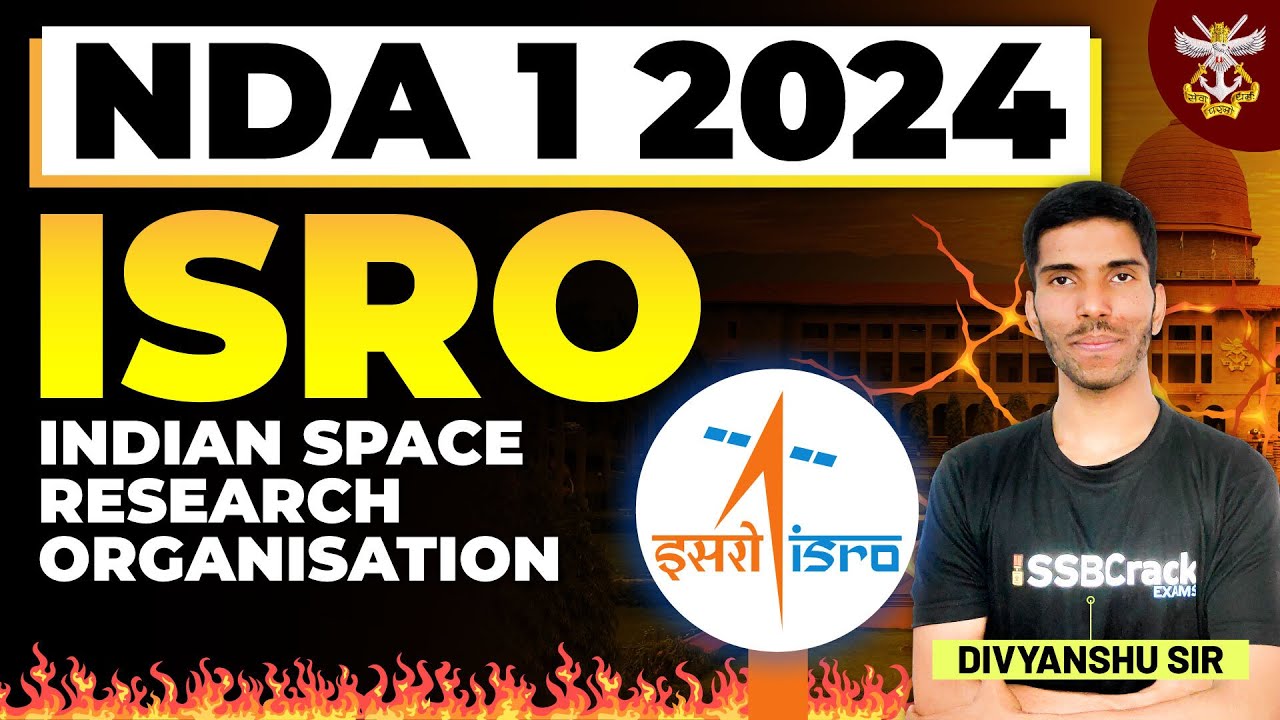The Indian Space Research Organisation (ISRO) stands as a beacon of technological prowess and innovation, driving India’s space exploration endeavors with remarkable achievements and groundbreaking missions.
NDA 1 2024 Indian Space Research Organisation
Origins and Evolution
ISRO traces its origins to the establishment of the Indian National Committee for Space Research (INCOSPAR) in 1962. Dr. Vikram Sarabhai, widely regarded as the father of the Indian space program, laid the foundation for India’s space aspirations with a vision to harness space technology for national development. In 1969, INCOSPAR evolved into ISRO, marking the official beginning of India’s space agency.
Key Milestones and Achievements
Over the decades, ISRO has achieved numerous milestones and accolades, showcasing its capabilities on the global stage. Some of the key achievements include:
- Aryabhata Satellite (1975): India’s first satellite, Aryabhata, launched into orbit, symbolizing India’s entry into space technology.
- SLV-3 Launch (1980): Successful launch of the Satellite Launch Vehicle-3, demonstrating India’s indigenous launch capabilities.
- Chandrayaan-1 (2008): India’s first lunar probe, Chandrayaan-1, discovered water molecules on the moon’s surface, marking a significant scientific breakthrough.
- Mangalyaan (2014): India’s Mars Orbiter Mission, Mangalyaan, entered Mars’ orbit in its maiden attempt, making India the first Asian country to reach Mars orbit and the fourth globally.
- NavIC Navigation System: Development of the Navigation with Indian Constellation (NavIC) system, providing accurate positioning information over the Indian region.
These achievements reflect ISRO’s expertise in satellite technology, launch capabilities, planetary exploration, and navigation systems, garnering international recognition and fostering collaborations with global space agencies.
Challenges and Resilience
ISRO has encountered challenges along its journey, including budget constraints, technical complexities, and geopolitical dynamics. However, the organization’s resilience, innovative approaches, and strategic partnerships have enabled it to overcome obstacles and achieve remarkable success.
Future Endeavors
ISRO’s future roadmap includes ambitious missions such as:
- Chandrayaan-3: A lunar exploration mission aimed at landing on the moon’s surface and conducting scientific experiments.
- Gaganyaan: India’s first manned space mission, intending to send Indian astronauts to space aboard the Gaganyaan spacecraft.
- Aditya-L1: A solar mission to study the sun’s corona and solar emissions, enhancing understanding of space weather and solar phenomena.
These missions underscore ISRO’s commitment to advancing space exploration, scientific research, and technological innovation for the benefit of humanity.
International Collaborations
ISRO actively collaborates with international space agencies and organizations, fostering cooperation in satellite launches, remote sensing, earth observation, and space exploration. Collaborative efforts with countries like France, Russia, the United States, and others have led to joint missions, technology exchanges, and knowledge sharing, contributing to global space advancements.
Conclusion
ISRO’s journey from humble beginnings to global recognition exemplifies India’s scientific and technological prowess in the space domain. With a legacy of achievements, ongoing missions, and future endeavors, ISRO continues to inspire the world with its commitment to exploration, innovation, and inclusive development, making significant contributions to humanity’s quest for knowledge and progress in space exploration.



















